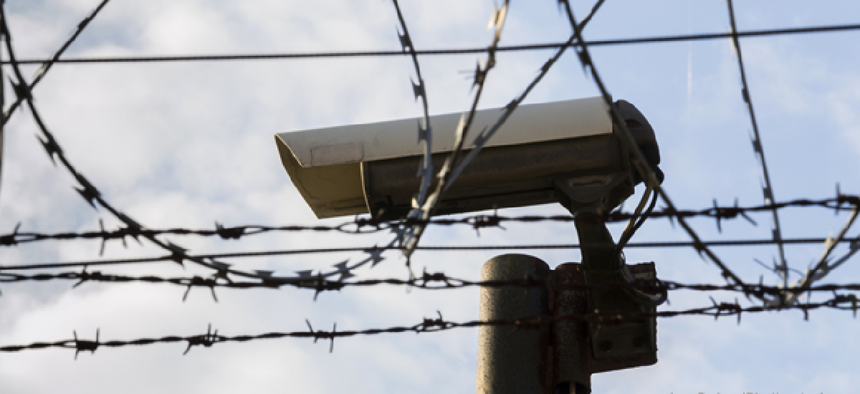3 factors affecting video surveillance storage


Connecting state and local government leaders
Agencies investing in more powerful cameras and analytics software should base their video storage decisions on retention time, accessibility and cost.
London. Manchester. Orlando. No one can forget the tragic acts of violence and terror that occurred in those cities in the past year. The attacks shocked and horrified us, and they continue to remind us of the threats we face.
Such events also bring to light the importance of our security and surveillance systems and processes, and they often expose areas where improvement is needed. For example, the investigation in the aftermath of the most recent attack in London revealed that the ringleader was known to authorities and had been previously interrogated.
That finding has raised many new questions. As a result, security and surveillance priorities in the U.K. are being scrutinized closely.
Security systems are in place to protect people and property. We are compelled, especially in the aftermath of a tragedy, to improve our systems by applying lessons learned.
Tightening border and airport security
Although the topic of border security is controversial, border crossings represent points of entry that can be exploited by adversaries, and governments are seeking new and better ways to monitor and secure boundaries through remote video surveillance and analytics.
The Department of Homeland Security uses strategically placed towers to provide remote video surveillance along the southwestern and northern borders of the United States. According to the U.S. Customs and Border Protection agency, adding more towers to expand that surveillance would provide more protection in remote areas, specifically along the southern border. In fact, earlier this year, CBP issued a request for information that lists specifications that would effectively double the number of towers in place today.
Airports are similar, at least in some respects, to land borders. As part of our nation’s critical infrastructure, they represent a type of boundary and serve as a key point of entry for international travelers that must be protected and monitored carefully.
Airports are also areas where large, diverse crowds congregate. Travelers from across the country and all parts of the world intersect at international airports, creating a target-rich environment for terrorists and a security challenge for authorities. Airport security officials must protect not only passengers and visitors, but also aircraft, terminals, parking facilities, fuel facilities, airline buildings and power supply facilities.
Video surveillance is an integral part of airport security systems. Cameras are placed throughout airport facilities to monitor crowd activity, perimeter gates and fencing, security checkpoints, baggage handling, hallways, seating areas, entrances and exits. Live streams are monitored continuously with the help of video analytics. Facial recognition technology helps identify known criminals and suspects while also recognizing employees with authorized access to specific areas. Virtual tripwires notify security personnel when boundaries have been crossed, and behavioral analytics algorithms help detect left-behind packages and other unusual behaviors.
Monitoring suspicious activity over time, tracking movements of watch-list suspects and sharing information among agencies are vital in the effort to provide better security at borders and airports. Carrying out those activities is complicated, and success depends on good information from a variety of sources, one of which is real-time and archival video surveillance footage.
Camera technology is becoming more advanced with higher-resolution capability, panoramic viewing, onboard analytics and integrated audio, chemical, infrared and thermographic sensors. Greater numbers of sophisticated cameras result in a growing volume of streaming video that must be ingested and stored. Where will this video be stored, and how much capacity is needed?
The answers depend on a variety of dynamics. But here are three factors to consider before making a video storage decision.
Retention time
Retention time can have a dramatic impact on the amount of storage needed. The longer an agency plans to keep the video footage, the more storage capacity it will need.
Due to regulations and litigation issues, retention time is increasing. In 2016, Georgia passed HB 976, which requires law enforcement agencies to retain video from body-worn and vehicle-mounted devices for a minimum of 180 days. In addition, any video recording related to a criminal investigation or pending litigation must be retained for 30 months.
When determining retention-time policies, complying with regulations is one consideration, but it’s not the only one. In some sectors, such as law enforcement and retail, the value of video increases as people and patterns are observed over longer periods of time. Be sure to consider longer-term video storage needs when making retention policy decisions.
Access
There are many storage options from which to choose: enterprise digital video recorders, boxed appliance network video recorders, PC-based network video recorders, enterprise storage platforms, tape and cloud storage. Some architectures make it easier than others to search, retrieve and share archived footage.
Before selecting a solution, consider who needs access to the video footage, how quickly they will need it and whether video files will be shared with other agencies.
Cost
Storage can account for up to 60 percent of the typical budget for video surveillance systems. That’s because many agencies choose high-performance disks, which are more expensive than tape. A good design principle is to size disk storage to meet ingest performance requirements and then build long-term retention capacity using tape or cloud. That approach minimizes storage costs while still delivering the performance needed.
Find a balance
Whether it’s enhancing border protection or airport security, video surveillance is a vital tool for law enforcement and other government officials. Expanded use of more powerful cameras, combined with new video analytics, offers a powerful way to improve security.
However, those new capabilities have an impact on video storage. Making a storage decision means striking a balance between retention time, accessibility and cost. Not all storage solutions are the same, so it’s worth investing the time to understand how each solution works to make the best decision.
NEXT STORY: Collecting data on the downpour




